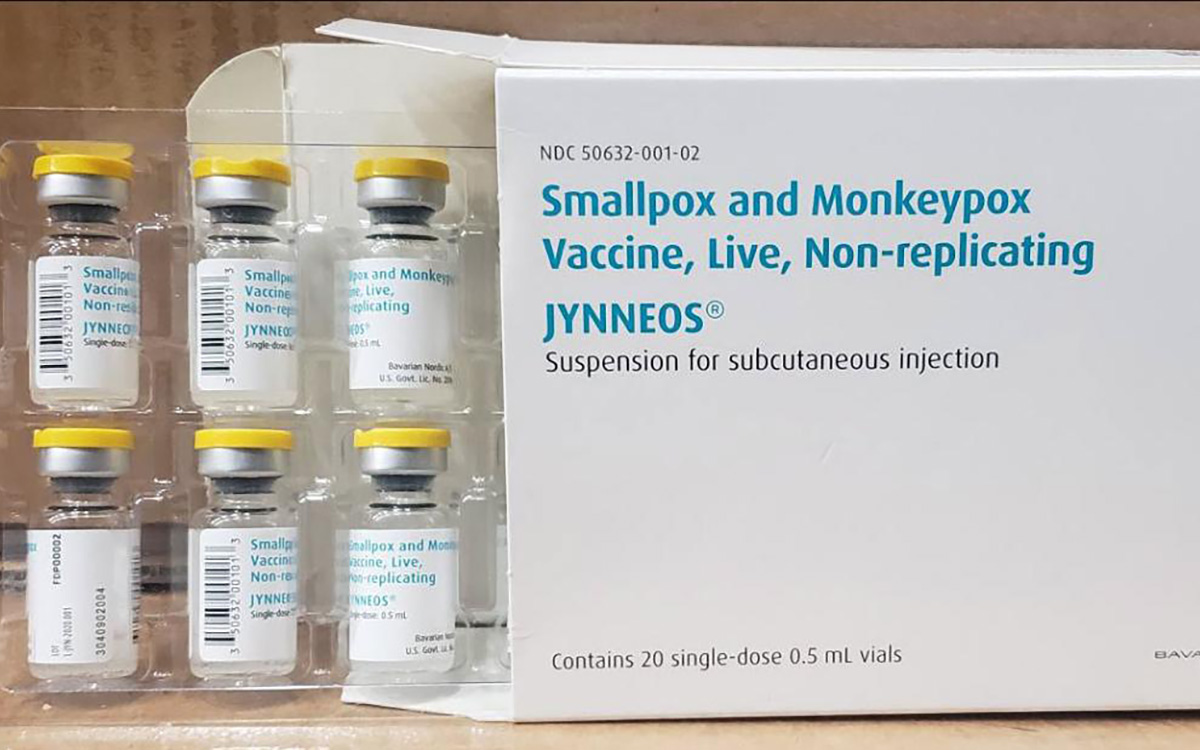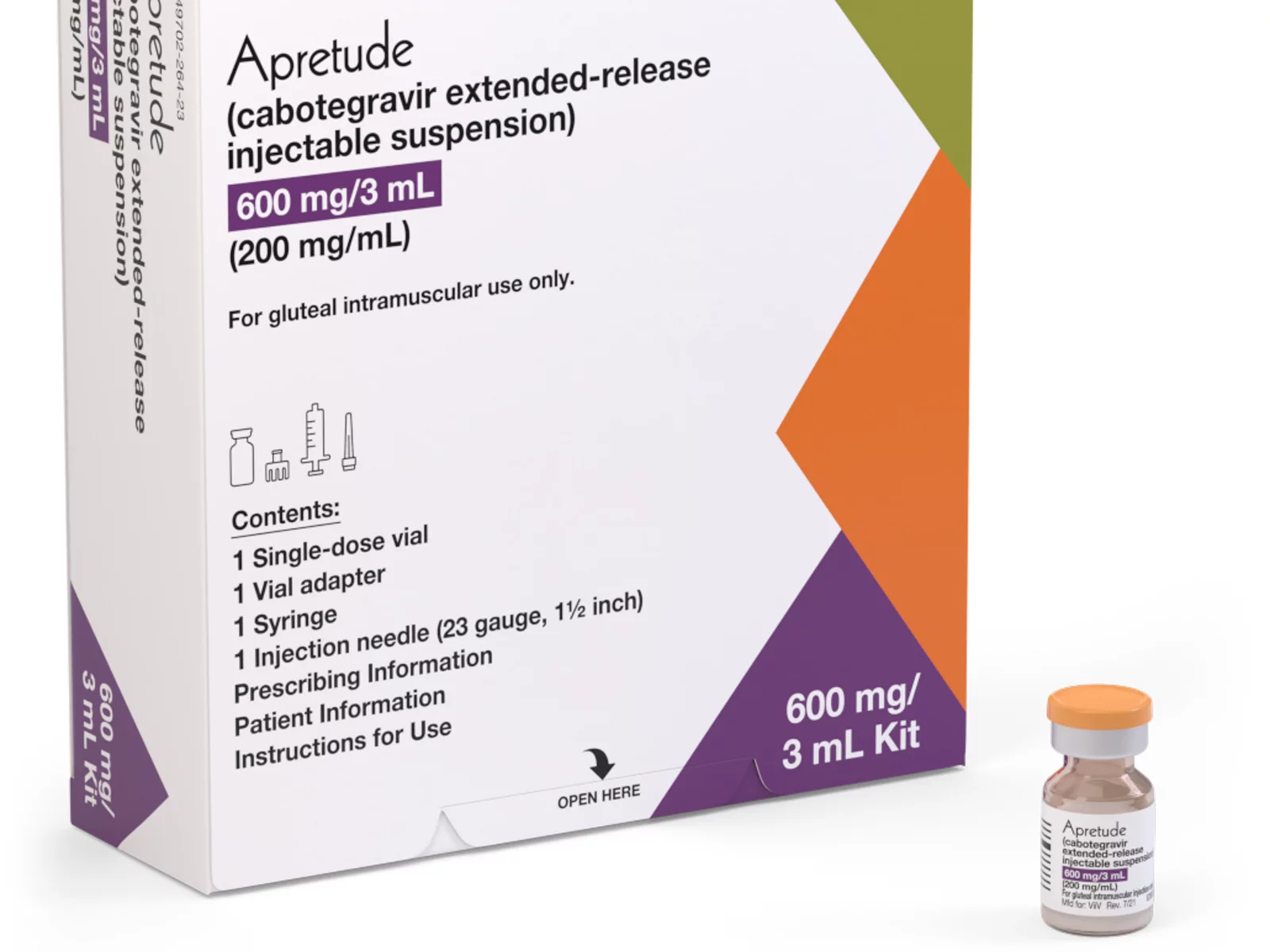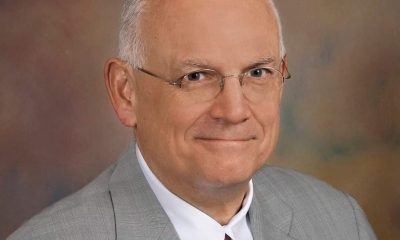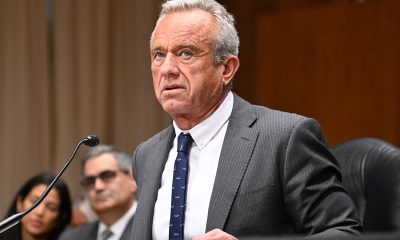Health
Obama AIDS strategy targets gay, bi men
White House plan calls for shifting HIV prevention to high-risk groups

Michael Weinstein, president of the AIDS Healthcare Foundation, called the proposed $30 million AIDS strategy and the $25 million proposed for ADAP grossly inadequate. Other AIDS activists disagreed with that assessment and praised President Obama’s plan. (Washington Blade photo by Michael Key)
A long-awaited National HIV/AIDS Strategy document the White House released this week calls for devoting more funds and attention to HIV prevention programs that target four high-risk population groups, especially gay and bisexual men.
In unusually blunt language, the 45-page strategy document that took 15 months to prepare says state and federal AIDS prevention programs have so far failed to adequately target gay and bisexual men and transgender people.
“Given the starkness and the enduring nature of the disparate impact on gay and bisexual men, it is important to significantly reprioritize resources and attention on this community,” says the document. “The United States cannot reduce the number of HIV infections nationally without better addressing HIV among gay and bisexual men.”
The document adds, “As with gay and bisexual men, transgender individuals are also at high risk for HIV infection. … Yet, historically, efforts targeting this specific population have been minimal.”
Other high-risk groups the strategy calls for targeting are blacks, Latinos and substance abusers.
The National HIV/AIDS Strategy and an accompanying 35-page Federal Implementation Plan call for reducing the overall number of new infections by at least 25 percent over the next five years; increasing access to medical care and “optimizing health outcomes” for people living with HIV; and reducing HIV-related health disparities.
“The United States will become a place where new HIV infections are rare and when they do occur, every person, regardless of age, gender, race/ethnicity, sexual orientation, gender identity, or socio-economic circumstance, will have unfettered access to high quality, life-extending care, free from stigma and discrimination,” the implementation plan declares as its goal.
The strategy and implementation document were released Tuesday amid a flurry of activity at the White House, which included a morning briefing on the document for the media and AIDS activists. Among those conducting the briefing were Melody Barnes, director of the White House Domestic Policy Council; Kathleen Sebelius, secretary of the Department of Health & Human Services, and Jeff Crowley, the gay director of the White House Office of National AIDS Policy.
Later in the day, President Obama hosted a reception in the White House East Room for about 150 national and community activists working on HIV/AIDS issues.
“From activists, researchers, community leaders who’ve waged a battle against AIDS for so long, including many of you here in this room, we have learned what we can do to stop the spread of the disease,” Obama told the gathering.
“We’ve learned what we can do to extend the lives of people living with it. And we’ve been reminded of our obligations to one another — obligations that, like the virus itself, transcend barriers of race or station or sexual orientation or faith or nationality,” he said.
“So the question is not whether we know what to do, but whether we will do it, whether we will fulfill those obligations, whether we will marshal our resources and the political will to confront a tragedy that is preventable.”
The president was interrupted briefly during his remarks by a man in the audience who shouted, “Mr. President,” prompting Obama to promise to talk with him after finishing his speech at the reception.
“Let’s hold on, you can talk to me after — we’ll be able to talk after I speak,” Obama said. “That’s why I invited you here, right? So you don’t have to yell.”
The audience member was later identified as Charles King, president and CEO of Housing Works, a New York City-based AIDS group that sometimes organizes AIDS-related protests involving arrests spurred by civil disobedience.
After completing his remarks, the president walked to where King was standing and spoke with him as news photographers hovered over the two.
King could not be immediately reached and it was not clear what he and Obama said to each other. But his brief interruption of Obama’s speech drew attention to concerns raised by some AIDS activists that the National HIV/AIDS Strategy does not include a call for significant new funds to fight the AIDS epidemic.
At the White House briefing earlier in the day, Sebelius and Crowley announced that the Obama administration would allocate $30 million to implement the strategy from a disease prevention fund created by the Affordable Care Act. The act is one of two landmark bills that Congress passed earlier this year to put in place the president’s sweeping health insurance reform proposals.
Sebelius and Crowley also noted that the administration would arrange for a separate emergency supplemental appropriation of $25 million to fund the struggling AIDS Drug Assistance Program, which provides life-prolonging anti-retroviral drugs for low-income people with HIV/AIDS who lack health insurance.
AIDS activists have criticized the administration and Congress for declining so far to appropriate $126 million in emergency funds for ADAP this year, an amount that state AIDS office directors believe is needed to provide drugs for 2,300 people who are on ADAP waiting lists in at least a dozen states.
The AIDS Healthcare Foundation, which bills itself as the largest global AIDS organization providing medical care to people with HIV/AIDS, held a separate news conference in Washington on Tuesday to criticize the AIDS strategy document.
Michael Weinstein, the group’s president, called the proposed $30 million allocation for the National HIV/AIDS Strategy and the $25 million proposed for ADAP grossly inadequate. He also said that the strategy document contained few if any new ideas and would likely “collect dust at the Library of Congress.”
But officials with other national AIDS organizations did not share Weinstein’s assessment of the strategy, calling it an important first step and a first-of-its-kind effort to prioritize federal AIDS programs.
“Today, the Obama administration took a significant step forward in the domestic battle against HIV/AIDS,” said AIDS Action, a national AIDS advocacy group, in a statement.
The statement said that, if properly implemented, the strategy would become “the first truly effective, comprehensive national plan in response to the U.S. HIV/AIDS epidemic, now in its 30th year.”
Michael Ruppal, executive director of the AIDS Institute, another national advocacy group, praised the strategy as an “ambitious” effort to curtail the domestic U.S. AIDS epidemic.
“The strategy will serve as a meaningful roadmap to reduce the number of HIV infections in the U.S., provide care to those who need it, and help reduce the stigma and disparities often associated with HIV/AIDS,” Ruppal said.
But he added, “Now we must turn our collective energies to implementing it with the necessary leadership and resources to achieve its goals and provide results for people who are currently living with HIV/AIDS or may be affected in the future.”
Cornelius Baker, former executive director of D.C.’s Whitman-Walker Clinic and a member of Obama’s Presidential Advisory Council on HIV/AIDS, issued a statement in his role as an official with the National Black Gay Men’s Advocacy Coalition.
He said the coalition considers the National HIV/AIDS Strategy and its accompanying implementation plan “significant steps forward in our nation’s effort to end the HIV epidemic.”
“Black gay men represent one of the most highly impacted populations and suffer the greatest disproportionate burden of the disease,” Baker said. “The National HIV/AIDS Strategy represents a major advance in its recognition that black gay men must be a focal point of attention if the United States is to make progress in reversing the trends of the HIV epidemic.”
In addition to the strategy and implementation documents, Obama issued a separate presidential memorandum to the heads of more than a dozen executive branch departments and agencies, establishing goals and timetables for carrying out the strategy.
The Obama memorandum designates six departments and agencies as “lead agencies” for implementing the strategy. They include the Department of Health & Human Services; Department of Justice; Department of Labor; Department of Housing & Urban Development; Department of Veterans Affairs; and the Social Security Administration.
The White House Office of National AIDS Policy, in consultation with the Office of Management & Budget, is assigned the task of monitoring the progress of the strategy’s implementation and setting the administration’s priorities for the project, the memo says.
At the White House briefing Tuesday, Crowley acknowledged that the National HIV/AIDS Strategy doesn’t initially call for providing significant new funds in the fight against AIDS, although he and Sebelius noted that the administration is committed to continue its existing proposals for increases in the federal AIDS budget in fiscal year 2011 and future years. The two also said the expansion of health insurance coverage for people who currently can’t afford it under the Obama health care legislation passed by Congress will greatly boost treatment and care for people with HIV/AIDS between now and 2014.
Crowley said the economic downturn and other competing spending needs made it important for the strategy to focus on ways to better use existing resources.
“Gay and bisexual men have comprised the largest proportion of the HIV epidemic in the United States since the first cases were reported in the 1980s, and that has not changed,” says the strategy document. “They still comprise the greatest proportion of infections nationally.”
To further show why greater resources must immediately be shifted to HIV prevention programs aimed at gay and bisexual men, the strategy document lists these facts:
• gay and bisexual men of all races are the only group in the United States where the estimated number of new HIV infections is rising annually;
• they are 44 to 86 times more likely to become infected with HIV than other men, and 40 to 77 times more likely to become infected than women;
• approximately one-half of the 1.1 million persons living with HIV in the United States are gay and bisexual men, and they account for the majority (53 percent) of new HIV infections each year;
• and high rates of HIV among gay men are found not only in large urban areas. More than half of all AIDS cases diagnosed in the United States are among gay and bisexual men irrespective of town or city size.
Jose Zuniga, president of the International Association of Physicians in AIDS Care, praised the strategy document’s call for participation by non-government entities and individuals to help implement the strategy, saying more than 13,000 members of his group worldwide and more than 5,000 U.S. members “stand ready” join in the effort.
“[W]e have a ready army of seasoned advocates — public health experts, clinicians and allied healthcare and laypeople providers, AIDS service organizations, community and faith-based organizations, academic institutions, and professional associations — that can help to accelerate implementation and thus allow for more quickly achieving many of the National HIV/AIDS Strategy’s objectives,” he said.
Monkeypox
US contributes more than $90 million to fight mpox outbreak in Africa
WHO and Africa CDC has declared a public health emergency

The U.S. has contributed more than $90 million to the fight against the mpox outbreak in Africa.
The U.S. Agency for International Development on Tuesday in a press release announced “up to an additional” $35 million “in emergency health assistance to bolster response efforts for the clade I mpox outbreak in Central and Eastern Africa, pending congressional notification.” The press release notes the Biden-Harris administration previously pledged more than $55 million to fight the outbreak in Congo and other African countries.
“The additional assistance announced today will enable USAID to continue working closely with affected countries, as well as regional and global health partners, to expand support and reduce the impact of this outbreak as it continues to evolve,” it reads. “USAID support includes assistance with surveillance, diagnostics, risk communication and community engagement, infection prevention and control, case management, and vaccination planning and coordination.”
The World Health Organization and the Africa Centers for Disease Control and Prevention last week declared the outbreak a public health emergency.
The Washington Blade last week reported there are more than 17,000 suspected mpox cases across in Congo, Uganda, Kenya, Rwanda, and other African countries. The outbreak has claimed more than 500 lives, mostly in Congo.
Health
Mpox outbreak in Africa declared global health emergency
ONE: 10 million vaccine doses needed on the continent

Medical facilities that provide treatment to gay and bisexual men in some East African countries are already collaborating with them to prevent the spread of a new wave of mpox cases after the World Health Organization on Wednesday declared a global health emergency.
The collaboration, both in Uganda and Kenya, comes amid WHO’s latest report released on Aug. 12, which reveals that nine out of every 10 reported mpox cases are men with sex as the most common cause of infection.
The global mpox outbreak report — based on data that national authorities collected between January 2022 and June of this year — notes 87,189 of the 90,410 reported cases were men. Ninety-six percent of whom were infected through sex.
Sexual contact as the leading mode of transmission accounted for 19,102 of 22,802 cases, followed by non-sexual person-to-person contact. Genital rash was the most common symptom, followed by fever and systemic rash.
The WHO report states the pattern of mpox virus transmission has persisted over the last six months, with 97 percent of new cases reporting sexual contact through oral, vaginal, or anal sex with infected people.
“Sexual transmission has been recorded in the Democratic Republic of Congo among sex workers and men who have sex with men,” the report reads. “Among cases exposed through sexual contact in the Democratic Republic of the Congo, some individuals present only with genital lesions, rather than the more typical extensive rash associated with the virus.”
The growing mpox cases, which are now more than 2,800 reported cases in at least 13 African countries that include Kenya, Uganda, Rwanda, and prompted the Africa Centers for Disease Control and Prevention this week to declare the disease a public health emergency for resource mobilization on the continent to tackle it.
“Africa has long been on the frontlines in the fight against infectious diseases, often with limited resources,” said Africa CDC Director General Jean Kaseya. “The battle against Mpox demands a global response. We need your support, expertise, and solidarity. The world cannot afford to turn a blind eye to this crisis.”
The disease has so far claimed more than 500 lives, mostly in Congo, even as the Africa CDC notes suspected mpox cases across the continent have surged past 17,000, compared to 7,146 cases in 2022 and 14,957 cases last year.
“This is just the tip of the iceberg when we consider the many weaknesses in surveillance, laboratory testing, and contact tracing,” Kaseya said.
WHO, led by Director General Tedros Adhanom Ghebreyesus, also followed the Africa CDC’s move by declaring the mpox outbreak a public health emergency of international concern.
The latest WHO report reveals that men, including those who identify as gay and bisexual, constitute most mpox cases in Kenya and Uganda. The two countries have recorded their first cases, and has put queer rights organizations and health care centers that treat the LGBTQ community on high alert.
The Uganda Minority Shelters Consortium, for example, confirmed to the Washington Blade that the collaboration with health service providers to prevent the spread of mpox among gay and bisexual men is “nascent and uneven.”
“While some community-led health service providers such as Ark Wellness Clinic, Children of the Sun Clinic, Ice Breakers Uganda Clinic, and Happy Family Youth Clinic, have demonstrated commendable efforts, widespread collaboration on mpox prevention remains a significant gap,” UMSC Coordinator John Grace stated. “This is particularly evident when compared to the response to the previous Red Eyes outbreak within the LGBT community.”
Grace noted that as of Wednesday, there were no known queer-friendly health service providers to offer mpox vaccinations to men who have sex with men. He called for health care centers to provide inclusive services and a more coordinated approach.
Although Grace pointed out the fear of discrimination — and particularly Uganda’s Anti-Homosexuality Act — remains a big barrier to mpox prevention through testing, vaccination, and treatment among queer people, he confirmed no mpox cases have been reported among the LGBTQ community.
Uganda so far has reported two mpox cases — refugees who had travelled from Congo.
“We are for the most part encouraging safer sex practices even after potential future vaccinations are conducted as it can also be spread through bodily fluids like saliva and sweat,” Grace said.
Grace also noted that raising awareness about mpox among the queer community and seeking treatment when infected remains a challenge due to the historical and ongoing homophobic stigma and that more comprehensive and reliable advocacy is needed. He said Grindr and other digital platforms have been crucial in raising awareness.
The declarations of mpox as a global health emergency have already attracted demand for global leaders to support African countries to swiftly obtain the necessary vaccines and diagnostics.
“History shows we must act quickly and decisively when a public health emergency strikes. The current Mpox outbreak in Africa is one such emergency,” said ONE Global Health Senior Policy Director Jenny Ottenhoff.
ONE is a global, nonpartisan organization that advocates for the investments needed to create economic opportunities and healthier lives in Africa.
Ottenhoff warned failure to support the African countries with medical supplies needed to tackle mpox would leave the continent defenseless against the virus.
To ensure that African countries are adequately supported, ONE wants governments and pharmaceutical companies to urgently increase the provision of mpox vaccines so that the most affected African countries have affordable access to them. It also notes 10 million vaccine doses are currently needed to control the mpox outbreak in Africa, yet the continent has only 200,000 doses.
The Blade has reached out to Ishtar MSM, a community-based healthcare center in Nairobi, Kenya, that offers to service to gay and bisexual men, about their response to the mpox outbreak.
Health
White House urged to expand PrEP coverage for injectable form
HIV/AIDS service organizations made call on Wednesday

A coalition of 63 organizations dedicated to ending HIV called on the Biden-Harris administration on Wednesday to require insurers to cover long-acting pre-exposure prophylaxis (PrEP) without cost-sharing.
In a letter to Chiquita Brooks-LaSure, administrator of the Centers for Medicare and Medicaid Services, the groups emphasized the need for broad and equitable access to PrEP free of insurance barriers.
Long-acting PrEP is an injectable form of PrEP that’s effective over a long period of time. The FDA approved Apretude (cabotegravir extended-release injectable suspension) as the first and only long-acting injectable PrEP in late 2021. It’s intended for adults and adolescents weighing at least 77 lbs. who are at risk for HIV through sex.
The U.S. Preventive Services Task Force updated its recommendation for PrEP on Aug. 22, 2023, to include new medications such as the first long-acting PrEP drug. The coalition wants CMS to issue guidance requiring insurers to cover all forms of PrEP, including current and future FDA-approved drugs.
“Long-acting PrEP can be the answer to low PrEP uptake, particularly in communities not using PrEP today,” said Carl Schmid, executive director of the HIV+Hepatitis Policy Institute. “The Biden administration has an opportunity to ensure that people with private insurance can access PrEP now and into the future, free of any cost-sharing, with properly worded guidance to insurers.”
Currently, only 36 percent of those who could benefit from PrEP are using it. Significant disparities exist among racial and ethnic groups. Black people constitute 39 percent of new HIV diagnoses but only 14 percent of PrEP users, while Latinos represent 31 percent of new diagnoses but only 18 percent of PrEP users. In contrast, white people represent 24 percent of HIV diagnoses but 64 percent of PrEP users.
The groups also want CMS to prohibit insurers from employing prior authorization for PrEP, citing it as a significant barrier to access. Several states, including New York and California, already prohibit prior authorization for PrEP.
Modeling conducted for HIV+Hep, based on clinical trials of a once every 2-month injection, suggests that 87 percent more HIV cases would be averted compared to daily oral PrEP, with $4.25 billion in averted healthcare costs over 10 years.
Despite guidance issued to insurers in July 2021, PrEP users continue to report being charged cost-sharing for both the drug and ancillary services. A recent review of claims data found that 36 percent of PrEP users were charged for their drugs, and even 31 percent of those using generic PrEP faced cost-sharing.
The coalition’s letter follows a more detailed communication sent by HIV+Hepatitis Policy Institute to the Biden administration on July 2.
Signatories to the community letter include Advocates for Youth, AIDS United, Equality California, Fenway Health, Human Rights Campaign, and the National Coalition of STD Directors, among others.




















